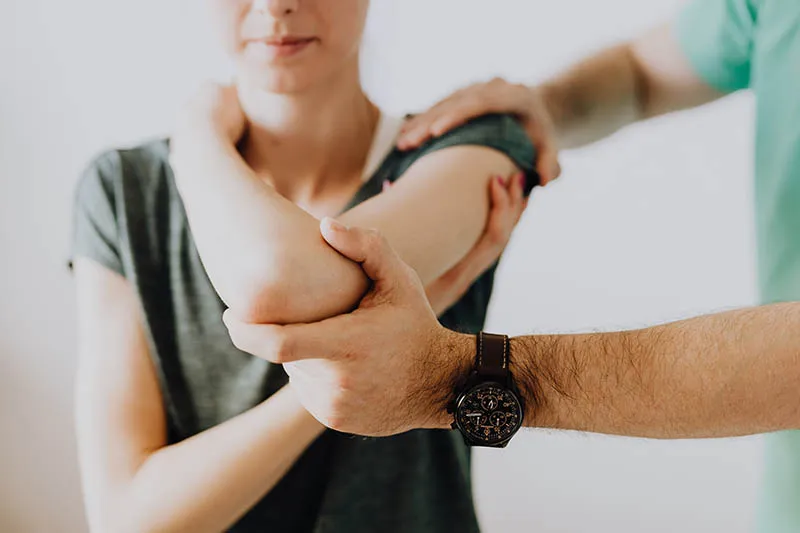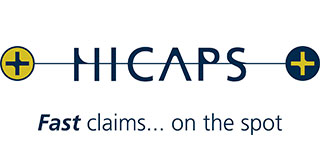What’s the difference between Physiotherapy vs Osteopathy?
Physiotherapy and osteopathy are distinct healthcare professions that treat and manage various physical issues, including injuries, chronic pain, and mobility problems.
While they share similarities in their goals to improve patient well-being, their treatment philosophies and areas of specialization differ.
Philosophy and Approach

Physiotherapy Defined
Physiotherapy is grounded in the science of movement. It seeks to improve a patient’s quality of life through physical rehabilitation, injury prevention, health and fitness.
Physiotherapists use a detailed understanding of the body’s anatomy and physiology to treat various conditions, employing techniques such as exercise, manipulation, mobilization, and various physical therapies using heat, cold, and electricity.
Osteopathy Defined
Osteopathy takes a more holistic approach. Osteopaths believe that the body’s structure and function are profoundly interconnected and that the body has an inherent ability to heal itself. They focus on treating the body rather than just addressing specific symptoms.
Osteopathic treatment often involves manual techniques, such as stretching, massaging, and manipulating the musculoskeletal system to enhance the body’s natural healing processes.
Contact CPHG Osteopathy For More Information
Techniques and Treatments
Physiotherapist Treatment Methods
Physiotherapists employ a comprehensive and systematic approach to diagnose patient conditions. This process begins with a detailed patient history to understand the nature and extent of the complaint, including onset, duration, and factors that exacerbate or alleviate symptoms.
Following the initial discussion, a physical examination is conducted, which may include assessing movement patterns, flexibility, muscle strength, joint mobility, and other functional tests specific to the patient’s complaints.
Physiotherapists also utilize their anatomy, physiology, and pathology knowledge to interpret clinical findings. In some cases, diagnostic imaging (such as X-rays and MRIs) and other tests may be reviewed or recommended to confirm the diagnosis. This thorough diagnostic process ensures the physiotherapist can develop a personalised and effective treatment plan tailored to the patient’s needs and recovery goals.
Physiotherapists use various techniques tailored to the individual’s condition and recovery goals. Common treatments include:
- Exercise programs to improve mobility and strengthen muscles
- Joint manipulation and mobilization to reduce pain and stiffness
- Soft tissue massage
- Electrotherapy techniques, such as Transcutaneous Electrical Nerve Stimulation (TENS)
- Acupuncture and dry needling
- Advice on posture and ergonomics
Osteopath Treatment Methods
Osteopaths take a holistic approach to diagnosing patient conditions, focusing on the interrelation between the body’s structure and function. The diagnostic process begins with a detailed patient history to gather insights into the symptoms, medical history, lifestyle, and any contributing factors. This is followed by a comprehensive physical examination where the osteopath assesses posture, mobility, and the musculoskeletal system through palpation and observation of movements to identify areas of restriction, tenderness, or imbalance.
Osteopaths may also evaluate the functioning of related systems, such as the circulatory, nervous, and lymphatic systems, to understand the broader impact on the patient’s health. Sometimes, they might refer patients for diagnostic imaging tests, like X-rays or MRIs, to gather additional information. This thorough evaluation allows osteopaths to determine the root cause of the patient’s complaint and formulate a holistic treatment plan that addresses both symptoms and their underlying causes.

While also utilizing manual therapy techniques, Osteopaths tend to focus more on the following:
- Manual manipulation of muscles and joints
- Cranial osteopathy, which involves gentle head manipulations
- Visceral osteopathy to treat internal organs
- Techniques aimed at improving blood flow and lymphatic drainage
- Advice on diet, exercise, and lifestyle changes to support overall health
Enquire at CPHG to experience your first Osteopathy treatment
Areas of Specialization
Both physiotherapists and osteopaths are trained to treat a wide range of conditions, but there are differences in their areas of specialization.
Why is Physiotherapy Used?
Physiotherapy is a versatile and essential branch of healthcare that offers numerous benefits across various aspects of physical health and rehabilitation. Physiotherapy’s role is invaluable in enhancing an individual’s quality of life, promoting independence, and facilitating recovery from various health conditions. Here’s a list of reasons why physiotherapy is commonly used:
- Rehabilitate injuries and post-surgery conditions.
- Manage chronic pain and diseases
- Improve mobility and physical function
- Enhance sports performance and prevent injuries
- Support recovery in neurological conditions
- Address respiratory and cardiopulmonary issues
- Promote overall health and well-being
What is Osteopathy Used For?

Osteopathy is a comprehensive form of manual therapy that emphasizes the body’s intrinsic healing capabilities, offering a wide range of benefits for various health conditions. Below is a detailed overview of the critical areas where osteopathy is utilized. Osteopathy is frequently sought for:
Musculoskeletal Pain and Injuries
One of the primary uses of osteopathy is in treating musculoskeletal issues, including pain and injuries in the back, neck, and shoulders. Osteopaths employ manual manipulation, stretching, and massage techniques to relieve pain, improve mobility, and restore function to the affected areas, providing a non-invasive solution to chronic pain and discomfort.
Headaches and Migraines
Osteopathy offers effective treatment for headaches and migraines, especially those related to musculoskeletal problems. By addressing tension and imbalances in the neck and upper back, osteopathic treatments can reduce the severity and frequency of headache episodes, offering a natural and holistic approach to headache management.
Digestive Problems
Osteopathic treatment can also benefit individuals with digestive issues. Through manual techniques to improve the mobility and function of the body’s internal organs, osteopathy can help alleviate symptoms associated with digestive disorders, such as bloating, constipation, and indigestion, contributing to better digestive health and comfort.
Pregnancy and Postpartum Recovery
Pregnancy and the postpartum period are times of significant physical change and potential discomfort for many women. Osteopathy provides tailored treatments to support women during these stages, helping to manage pain, prepare the body for childbirth, and assist in recovery after delivery. These treatments focus on relieving strain on the musculoskeletal system, enhancing comfort, and promoting overall well-being.
General Health and Well-being
Beyond addressing specific health issues, osteopathy is valued for its holistic approach to enhancing general health and well-being. By promoting structural balance and efficient body mechanics, osteopathic treatments can help individuals achieve a sense of overall vitality and improved quality of life. This makes osteopathy a preferred choice for those seeking to maintain their health or enhance their physical condition through natural and holistic means.
When do you know when to see an Osteopath or a Physiotherapist?
Deciding whether to see an osteopath or a physiotherapist depends on your specific health needs, preferences, and approach you are looking for in treatment. Here are some guidelines to help you make an informed decision:
When to See an Osteopath?

Holistic Approach
If you prefer a holistic treatment approach that considers the entire body rather than focusing solely on the area of pain or dysfunction, an osteopath may be the right choice. Osteopaths examine how the body’s systems are interconnected and aim to restore balance and promote self-healing.
Chronic Conditions
For chronic pain conditions, especially those related to the musculoskeletal system, like back pain, neck pain, and repetitive strain injuries, osteopathy can offer relief through hands-on manipulation and movement.
Preventative Care
Osteopathy can also benefit individuals seeking preventative care to maintain mobility and prevent future injuries or health issues.
When to See a Physiotherapist?

Rehabilitation and Recovery
Suppose you are recovering from surgery or an injury or need rehabilitation after an accident. In that case, a physiotherapist specializes in developing customized treatment plans that include exercises to improve strength, mobility, and function.
Specific Physical Conditions
For specific conditions such as sports injuries, neurological disorders (stroke, Parkinson’s disease), or cardiopulmonary diseases (COPD, post-myocardial infarction care), physiotherapists offer targeted interventions.
Exercise and Movement-Based Therapy
If you are looking for a treatment approach that heavily emphasizes exercise, movement therapy, and specific interventions like electrotherapy or ultrasound therapy, physiotherapy is likely more suited to your needs.
General & Personal Considerations
Sometimes, the decision might be influenced by a referral from a healthcare provider, such as a GP or recommendations based on your condition’s complexity.
If unsure, consider consulting with an osteopath and a physiotherapist to discuss your condition and treatment options. Many practitioners are willing to advise on which type of treatment or referral practitioner might be most beneficial for your situation.
Ultimately, both osteopaths and physiotherapists offer valuable approaches to treatment and recovery. The best choice depends on your health situation, treatment goals, and personal preferences for care.
Education and Training

The education and training required for each profession also differ.
Physiotherapy Education & Training
Physiotherapists receive comprehensive training through university programs that typically last four years, focusing on anatomy, physiology, pathology, and clinical physical therapy practices. This education includes both theoretical study and practical clinical experience. After graduating, they must register with the Physiotherapy Board of Australia to practice legally.
Many physiotherapists further specialize in sports, pediatric, or geriatric physiotherapy, enhancing their skills and patient care. Ongoing professional development is required to maintain their registration and keep up with the latest in the field.
Osteopathy Education & Training
Osteopaths receive specialized training in osteopathic medicine, which includes studying anatomy, physiology, pathology, and osteopathic manipulative medicine.
Osteopaths in Australia must complete a four to five-year, full-time university degree. This can be a double degree (a Bachelor of Health Science and a Master of Health Science in Osteopathy) or a dedicated Master’s degree following an undergraduate health science degree. These programs are offered at several universities across Australia and are accredited by the Osteopathy Board of Australia and the Australian Health Practitioner Regulation Agency (AHPRA).
The structured education and training ensure that osteopaths in Australia are well-equipped to provide high-quality, evidence-based care, focusing on the holistic well-being of their patients.
Conclusion
While physiotherapy and osteopathy share the goal of helping patients achieve better health and mobility, they do so through different philosophies, techniques, and areas of focus.
Physiotherapy is more about rehabilitation and physical improvement through various techniques, whereas osteopathy emphasizes a holistic approach to treating the body.
Patients may choose one over the other depending on their specific health needs, preferences for treatment approaches, or on the advice of their healthcare provider. In some cases, combining both therapies may offer the best outcome for the patient’s condition.

Book a Gold Coast Osteopath Near Me
Explore the healing power of osteopathy and enhance your well-being with the experts at Chirn Park Health Group on the Gold Coast—contact us today to begin your journey toward optimal health.
Make an Online Enquiry with CPHG Osteopaths on the Gold Coast
This article is for informational purposes only and should not be considered definitive medical advice for your situation. Always consult a healthcare professional for diagnosis and treatment recommendations. Do not ignore professional advice or delay seeking it based on the content of this article.









